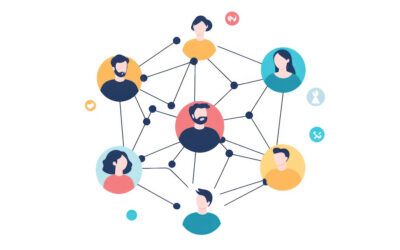Soldiers without a battle plan. David without Goliath. Peanut butter without jelly.
If these concepts seem lonely without each other, you have the foundation for understanding why a competitive analysis is so important to your business. Without the insights, vision, and understanding of what your competitors are doing in your marketplace, your sales professionals are, essentially, only partially prepared to succeed in the dynamic, ever-changing marketplace. In fact, about three-quarters of sales organizations point to incomplete competitive intelligence as a reason for a past sales campaign falling short.
Truth be told: If you want your salespeople to beat the competition, they need to fully understand the competitive landscape that they’re up against.
The completion of a competitor analysis becomes the focal point for understanding your strengths, weaknesses, opportunities, and threats in the marketplace. It’s something that each of your reps should be comfortable doing on a regular basis.
By evaluating your industry as a whole—and the players within it—you’ll be able to:
- Clearly identify what makes your company, product, or service unique
- Spot future direct competitors early, and prevent them from encroaching on your customers
- Determine the sales and marketing strategy that makes the most sense for your company
- And, most importantly, understand what it will take to come back stronger from the impacts of the pandemic than your competitors.
Coach Your Sales Reps to Gather Competitive Intelligence
An effective competitor analysis doesn’t need to be complicated. To gather competitive intelligence, your reps can research direct competitors (and emerging, potential competitors) by using search engines and tools such as Hoovers, LinkedIn, Forrester, and even Google Alerts. They can also simply talk to customers and prospects to gather data. Any insight your reps can uncover will be helpful to develop your competitive strategy, but coach them to investigate the answers to these five questions:
1. Who are your direct competitors and how is your brand different?
Start with an understanding of the difference between direct and indirect competitors. Direct competitors are those companies that offer a product or service that is substantially similar to yours, and that operates in your same geography or marketplace. Conversely, an indirect competitor is one that offers dissimilar products but could satisfy the same customer need, or solve the same problem. For purposes of this assignment, focus only on your direct competitors. Start by having your sales reps list out who they’re competing against directly. Then, they can explore where your company’s competitive advantage lies. This can be done by listing out the strengths and weaknesses of your own brand, and the brands you’re up against in the marketplace.
According to marketing automation company Hubspot, here are the kinds of questions you can ask in conducting your analysis of the competition:
- Are they a low-cost or high-cost provider?
- Are they working mainly volume sales or one-o purchases?
- What is their market share?
- What are the characteristics and needs of their ideal customers?
- Are they using different pricing strategies for online purchases versus brick and mortar?
- How does the company differentiate itself from its competitors?
- How do they distribute their products/services?
Being able to differentiate yourself from the competition will allow your reps to compete on more than just price. It’s important that you work with your team to understand your true strengths and differentiators, so your reps can confidently convey to prospects and customers why they should do business with you. Without differentiation, the lowest-priced provider will often prevail.
2. Has a competitor with a similar product entered the marketplace in the past three years?
This answer may give rise to a growing market share that has potentially been underserved in your industry. A new way of doing business may have been developed by these upstart competitors and they are able to capitalize on their innovative approach to the market. If they’re winning business, it’s possible that your market still has room for growth. You’ll want to be vigilant, however, so that they don’t swoop in on your customer base. Creating and reviewing a list of competitors will give your sales team insight into why they’re gaining ground, and which of their strategies might benefit your company as well.
3. What kind of marketing and sales strategy does the competition employ?
Knowing the message your competition is consistently communicating to the marketplace will allow you to prepare your own unique marketing messages in a way that keeps you elevated above them. Are they touting benefits that you have but aren’t conveying? Are there gaps in their messaging that you can take advantage of? An in-depth analysis of your competition’s marketing materials can clue you in even further to the competitive advantage that your brand can claim as its own.
It also is helpful – but more difficult – to better understand the competitors’ sales process. According to Hubspot, questions you’ll want to answer at this phase include:
- What does the sales process look like?
- What channels are they selling through?
- Do they have multiple locations and how does this give them an advantage?
- Are they expanding? Scaling down?
- Do they have partner reselling programs?
- What are their customers’ reasons for not buying? For ending their relationship with the company?
- What are their revenues each year? What about total sales volume?
- Do they regularly discount their products or services?
- How involved is a salesperson in the process?
4. Why should your customers choose you over the competition?
This is a very basic question that many sales organizations fail to investigate. Make it routine for your sales reps to conduct a win analysis after every successful sale they make—focusing on why the customer chose your company over the competition. On the flip side, a postmortem analysis can also uncover valuable information on your weaknesses and growth opportunities. Don’t just ask new customers why they’ve chosen to work with you. Have your reps ask long-time customers why they enjoy partnering with you as well. Let your customers talk, and be thankful for every insight they give you.
5. What market segments will provide you with a home-field advantage?
It’s far easier to win when you have the home-field advantage. Work with your sales team to identify the segments you already have a strong presence in over the competition, and hone in on that target market. You also should evaluate which market segments your competition has a stronghold on, and work to identify untapped market share you have the best chance of penetrating.
Conclusion
These questions are designed to provide your sales team with a framework for understanding your strengths and weaknesses as compared to those of your competitors. Identifying your competitors and understanding where you can differentiate relieves pressure to lower prices when the competition is stiff. Find what makes your brand unique, and use that advantage to build value in the eyes of your customers and prospects. For more than 40 years, The Brooks Group has partnered with sales organizations around the globe—helping them to hire, train, coach, and develop salespeople and sales managers to reach maximum performance levels. If you’re looking to help your sales team build value, outsell the competition, and master negotiation techniques, the Sales Negotiation Virtual Training Program is a great option. Learn more and request an info packet here.
If you’re looking to help your sales team build value, outsell the competition, and master negotiation techniques, the Sales Negotiation Virtual Training Program is a great option. Learn more and request an info packet here.
NOTE: Our sales training tools are designed to make your life easier. Use them to your advantage.
Create the Biggest Impact at Your Annual Sales Meeting
It’s not often that you’re able to get the whole sales team together. Make the most of your meeting by getting hyper-focused on the things that will improve your team’s performance the most.




